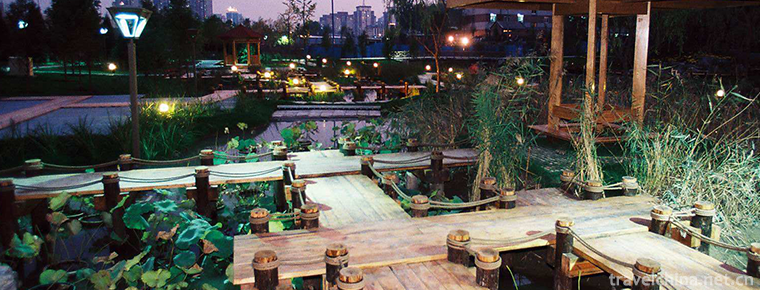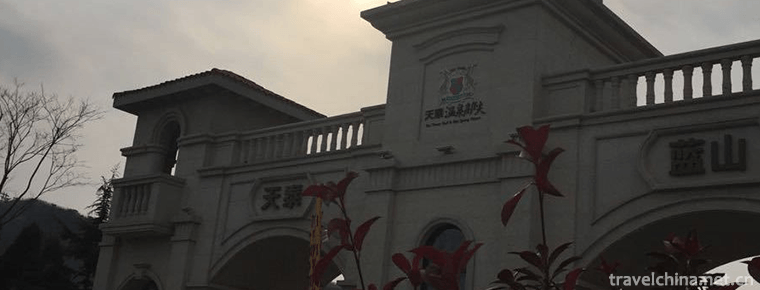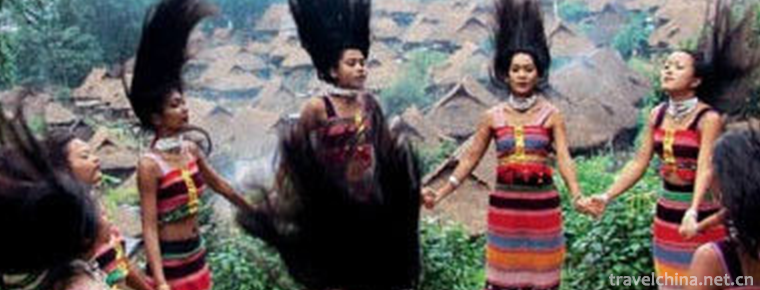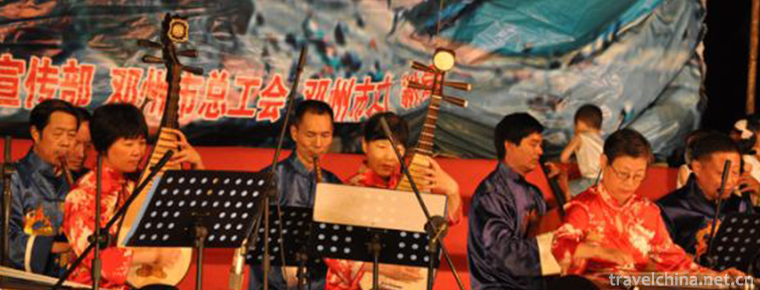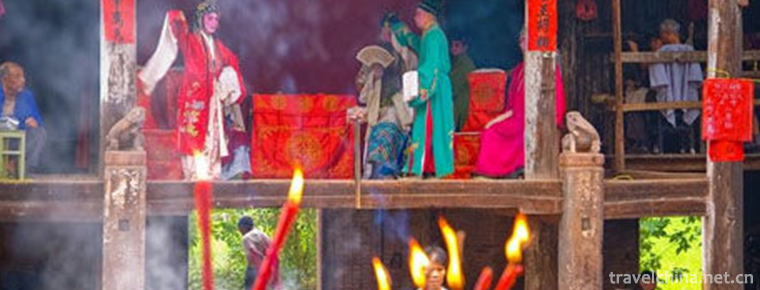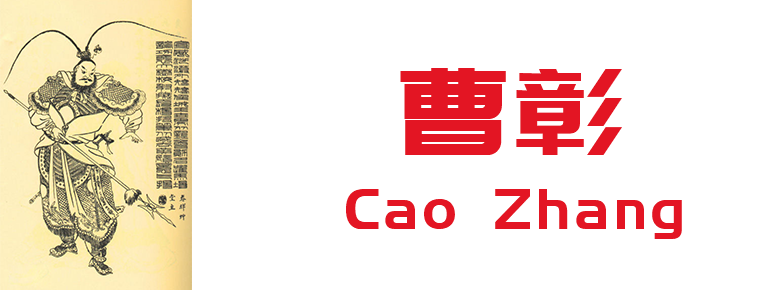China Ceramic Museum
The China Ceramic Museum is located in the Cultural Square in the center of Zibo City. On the basis of Zibo Exhibition Hall in April 2001, it was transformed by large-scale investment. It was designed by the Academy of Fine Arts of Tsinghua University. It is a comprehensive modern ceramics museum which integrates exhibition, exhibition, collection, research, sales and social education.
Introduction to Ceramic Museum
Ceramics is the symbol of Chinese civilization. China is the home of ceramics. With its unique charm, Chinese ceramics have spread far and wide and become a bright pearl in the treasure house of world culture and art. The China Ceramic Museum was established with the approval of the relevant state departments. It was carefully designed by Tsinghua University. It covers a total area of 10,000 square meters. It is divided into two parts: display and marketing. The exhibition includes preface hall, comprehensive hall, ancient hall, modern hall, folk hall, high-tech hall, international hall, ceramics hall and high-tech ceramics. It comprehensively displays ceramic relics of various historical periods and Masters'ceramic art works of various ceramics producing areas in China, totaling more than 10,000 pieces (sets). Among them: more than 500 ancient exhibits, focusing on the display of 8000 years, Zibo production, Zibo unearthed and Zibo collection of various ceramic cultural relics. More than 9500 pieces of modern exhibits, including more than 120 representative works of 48 contemporary Chinese arts and crafts masters and 35 Chinese ceramics masters, more than 500 works of art of 50 provincial masters and more than 500 works of art of famous ceramics countries and regions such as the United States, Britain, Canada, Australia, Finland, Japan, Korea, Taiwan, Hong Kong and so on. The business part is mainly composed of the Ceramic Business Department, Ceramic Gift Center and Leisure Ceramic Bar. In the leisure pottery bar, visitors can make pottery on site and enjoy the fun of pottery creation. Entering the Ministry of Ceramic Art Management, we can get a panoramic view of the fine ceramics in the ceramics producing areas all over the country.
Since its opening in September 2002, the China Ceramic Museum has won more and more attention from tourists both at home and abroad for its profound cultural connotation and unique artistic charm. It has received more than 2 million visitors, including Jiang Zemin, Huangju, Wu Guanzheng, Li Tieying, Jiang Chunyun and other party and state leaders, from colleges and universities, as well as primary and secondary school students. It has become the preferred cultural tourist attraction for Zi tourists. One of them is designated by the State Tourism Administration as a national AAAA-level tourist attraction and a national industrial tourism demonstration site.
The exhibition area of China Ceramic Museum is more than 4000 square meters. It shows more than 2500 sets of fine ceramics unearthed, produced and collected in Zibo since the post-Li culture of the Neolithic Age over 8000 years ago, of which 249 are ancient exhibits. The exhibition hall is divided into seven parts: preface area, comprehensive exhibition area, ancient and modern exhibition area, modern exhibition area, Ceramics Creation area, ceramics sales area and exhibition area of Chinese and foreign ceramics Masters'works. Modern exhibits are classified into architectural ceramics, garden art ceramics, sanitary ceramics, household ceramics, art ceramics, modern ceramics, engraved ceramics and high-tech ceramics according to their different uses and artistic styles, showing the highest artistic level and development achievements of Zibo ceramics. Ceramics is the symbol of Chinese culture.
Zibo is the birthplace of Qi culture and one of the five major ceramic producing areas in China. Ceramic production has a long history and plays an important role in China. According to historical records and archaeological excavations, the production of ceramics began in Zibo area as early as the "post-Li culture" period 8,000 years ago. At the beginning of the Western Zhou Dynasty, Qi set up a special "Taozheng" official to manage the production of pottery, and set up a Pottery Workshop in the city of Qidu to specialize in the production of pottery. Around the Wei, Jin, Southern and Northern Dynasties, the production of ceramics in Zibo completed the transition from ceramics to ceramics. During the Tang and Song Dynasties, ceramic production techniques became more and more sophisticated and its scale was expanding.
Visiting the China Ceramics Museum, you will have a deep understanding of the splendid culture of Zibo ceramics for more than 8000 years and the latest development achievements of Zibo ceramics. The understanding of the long history and civilization of the Chinese nation will also be sublimated qualitatively. With the expansion of kiln sites, Zibo has gradually formed its own characteristics and produced a number of influential ceramics, such as celadon, black glaze of Cicun kiln, twisted tires of Boshan kiln and colored porcelain. During the Ming and Qing Dynasties, Zibo ceramics products were of heavy shape, unique decoration and prosperous production and marketing, forming a ceramics production and marketing center represented by Boshan. After the founding of New China, Zibo ceramics, on the basis of inheriting and developing traditional techniques, based on local resources and exploiting and innovating, have developed new kinds of ceramics such as talc, feldspar, quartz and bone. The art of engraving ceramics is unique and has formed a new feature of Zibo ceramics. Daily-used ceramics, art ceramics, industrial ceramics and architectural ceramics have developed in phase. It has been exported to more than 70 countries and regions in the world and has made due contributions to the development of ceramic production technology and ceramic art in China.
The China Ceramic Museum is located in the Cultural Square in the center of Zibo City. It is a comprehensive modern ceramics museum integrating display, exhibition, collection, research, sales and social education.









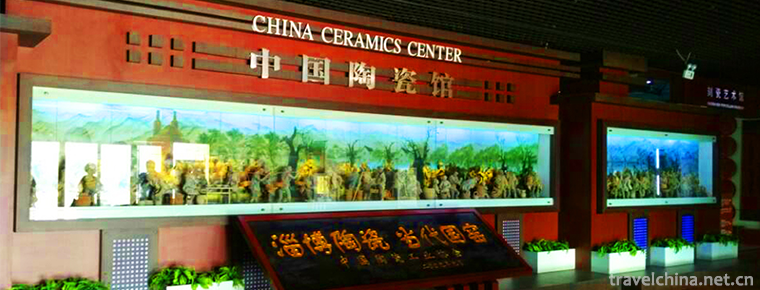
-
Yuan Dynasty Capital City Wall Site Park Yuandadou Chengyuan Site Park
The Yuandu Chengyuan Site Park was built on the Tucheng Site of Yuandu (National Key Cultural Relics Protection Unit, batch No. VI-1). It is located near Mingguang Village, Southern College Road.
Views: 141 Time 2018-12-23 -
Tiantai Hot Spring Resort
Tiantai Hot Spring Resort is located in Jimo Hot Spring Town. It has 27 holes of international championship grade Mountain Golf course. It is a large high-end rural resort centre integrating food.
Views: 343 Time 2019-02-22 -
Wu Songgun Taiwan Wetland Forest Park
Wu Song Gu Taiwan Wetland Forest Park: Wu Song Gu Taiwan Wetland Forest Park with a total area of 53.46 hectares is located in the eastern part of Baoshan District.
Views: 189 Time 2019-02-22 -
Traditional archery
The traditional bow is an ancient invention consisting of three parts: wood, horn and tendon. The manufacturing process is complex and the materials used are various, and the workmanship and material .
Views: 152 Time 2019-04-19 -
Alpine Hand in Hand Dance
"Hand-in-hand dance" is a kind of self-entertainment dance with the longest history and widespread spread spread among the folk dances of the mountain nationality. During the wedding and fes.
Views: 97 Time 2019-04-30 -
Dark pass
Dark pass Dark Biography, as the first Creation Epic of the Han nationality, is represented by folk songs and songs. It began to circulate in the Ming and Qing Dynasties. .
Views: 316 Time 2019-05-03 -
Silk Strings of Laohekou
Laohekou Silk String is a traditional folk music in Xiangyang City, Hubei Province. Laohekou Silk String is different from other forms of folk literature and art. It is a music that combines folk arti.
Views: 289 Time 2019-05-11 -
Qiyang Opera
Qi Opera is one of the traditional local dramas in Hunan Province. It is also called Qiyang Band, Qiyang Opera in the early years of the Republic of China, and Qiyang Qidong Opera in the folk.
Views: 94 Time 2019-06-10 -
Yongxiu Yaya Opera
Yongxiu Ya Opera originated in Wu Town, one of the four famous towns in Jiangxi Province. It was born in the late Ming Dynasty and Ganbei Bench Opera. Because all of its female characters were played .
Views: 192 Time 2019-07-14 -
Cao Zhang
Cao Zhang (189 years - 223 August 1st), Zi Zi Wen. Pei Guo Qiao County ( Anhui People in Bozhou. Three countries period the Wei state of the Three-Kingdoms Period Imperial clan, general, Wei Wu Di Cao.
Views: 156 Time 2019-09-15 -
Hanging coffin of Bo people BoRen
"Bo People's hanging coffin" is located in Yibin City, Sichuan Province. It is distributed in Gongxian County, Xingwen County and Junlian county. "Gong county annals" records that "Gongben Bo land, Bo people hanging coffins."..
Views: 139 Time 2020-10-16 -
Scientific research on Chengdu Giant Panda Base
As of 2016, it has undertaken one national major basic research project (former "973" project), one national "Tenth Five Year Plan" high technology research (863 plan), several provincial, ministerial and municipal scientific research projects and Chengdu Giant Panda Breeding .
Views: 104 Time 2020-12-13
